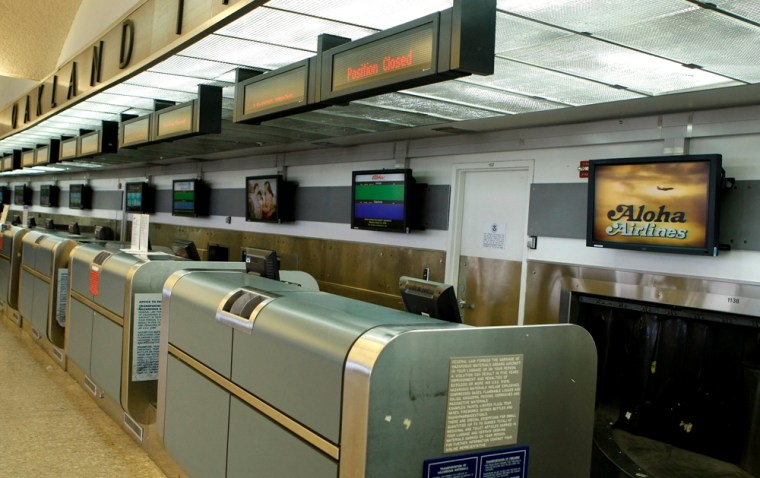Hang on, folks, we’re in the homestretch.
In just a week, we can close the books on one of the wildest, most unpredictable years in travel since Orville bumped Wilbur off the first successful flight of the Wright Flyer (105 years ago this month).
It began with the passage of the nation’s first air passenger bill of rights — it was later struck down — and came to a close with the merger of Delta and Northwest, which created the world’s largest airline just as millions of people decided they could no longer afford to travel. Along the way, the following stories kept things interesting.
The kerfuffle over à la carte pricing
In February, United Airlines announced it would start charging most passengers $25 to check a second bag. It was hardly the first instance of unbundling an ancillary service from the price of a plane ticket, but it effectively redefined the idea of what that ticket actually buys. From snacks to assigned seats to checking a single bag, à la carte pricing was suddenly all the rage.
And travelers responded in kind, railing against everything from the airlines’ “nickel and diming” tactics to their seatmates’ packing habits. Some went so far as to propose that fares be based on total ballast, i.e., your personal poundage plus your possessions, an idea that led to the launch of an airline that would do just that.
Needless to say, Derrie-Aire was fictitious, but à la carte pricing is clearly the new reality. Nobody likes it, but the fact is, we’ve been ponying up and the airlines aren’t about to give that revenue back.
FAA flunks the oversight test
In March, the FAA fined Southwest Airlines $10.2 million for “serious and deliberate safety violations” regarding missed inspection deadlines. As it turned out, the record-setting fine was just the tip of the inspection iceberg as subsequent investigations uncovered gaping holes in the FAA’s own approach to oversight.
That, in turn, led to concerns about systemic problems at the FAA, Congressional hearings on the subject and the canceling of thousands of flights as other airlines scrambled to comply with the FAA’s renewed focus. No one doubted the underlying safety of the U.S. airline industry, but subsequent stories about shoddy maintenance, near misses and parts flying off midflight raised a related question: was that a function of diligence or just damned good luck?
Perhaps one of the seven U.S. congressmen who were on the Continental plane that suddenly lost cabin pressure last July could answer that. Making an emergency landing in New Orleans, they ended up missing the vote on H.R. 6493, the Aviation Safety Enhancement Act of 2008.
The incredible shrinking airline industry
It wasn’t just one story, but rather, a steady drumbeat of bad news and depressing developments, most of them traceable in one way or another to the price of oil. In mid-July, a barrel of crude went for an astonishing $147, up 60 percent from January and 100 percent from a year earlier.
Among the effects were serial bankruptcies, including five carriers in one four-week period; near-weekly fare hikes — 15 successful ones by early July; and capacity cuts that reduced the number of available seats system-wide by 10 percent to 15 percent and eliminated service to nearly 100 cities altogether. After all that, the economy tanked, demand cratered and the industry found itself contemplating further shrinkage ahead.
It’d be nice to balance all that with a bit of humor, but it’s just plain sad.
American drivers hit the brakes
Not surprisingly, spiraling oil prices took their toll on car travel, too. Between January and July, a gallon of regular gas jumped from $3 to a high of $4.11, prompting cash-strapped drivers to ease the pain any way they could. One enterprising soul even went so far as to break into an airport in San Jose, Calif., hoping to fill his car with aviation fuel. Presumably, he was too drunk to realize it cost almost $6 a gallon.
The rest of us simply cut back, so much, in fact, that earlier this month, the Federal Highway Administration reported that Americans drove 100 billion miles less between November 2007 and October 2008 than during the same period a year earlier. The drop was so severe, it helped push gas prices down to $1.65 per gallon last week, a price not seen since March 2004.
Hard times, good deals
This, when you think about it, could serve as the “lede” for what may turn out to be the most surprising travel story of the year. Despite the steady stream of miserable news, the process of getting from Point A to Point B is starting to make a pendulum swing from ordeal to something approaching enjoyable.
And less pain at the pump is only part of it. The airlines’ on-time performance is improving (to 86 percent in October), load factors are falling and dozens of popular destinations are essentially on sale. For anyone who can still afford to travel, that’s good news, indeed.
